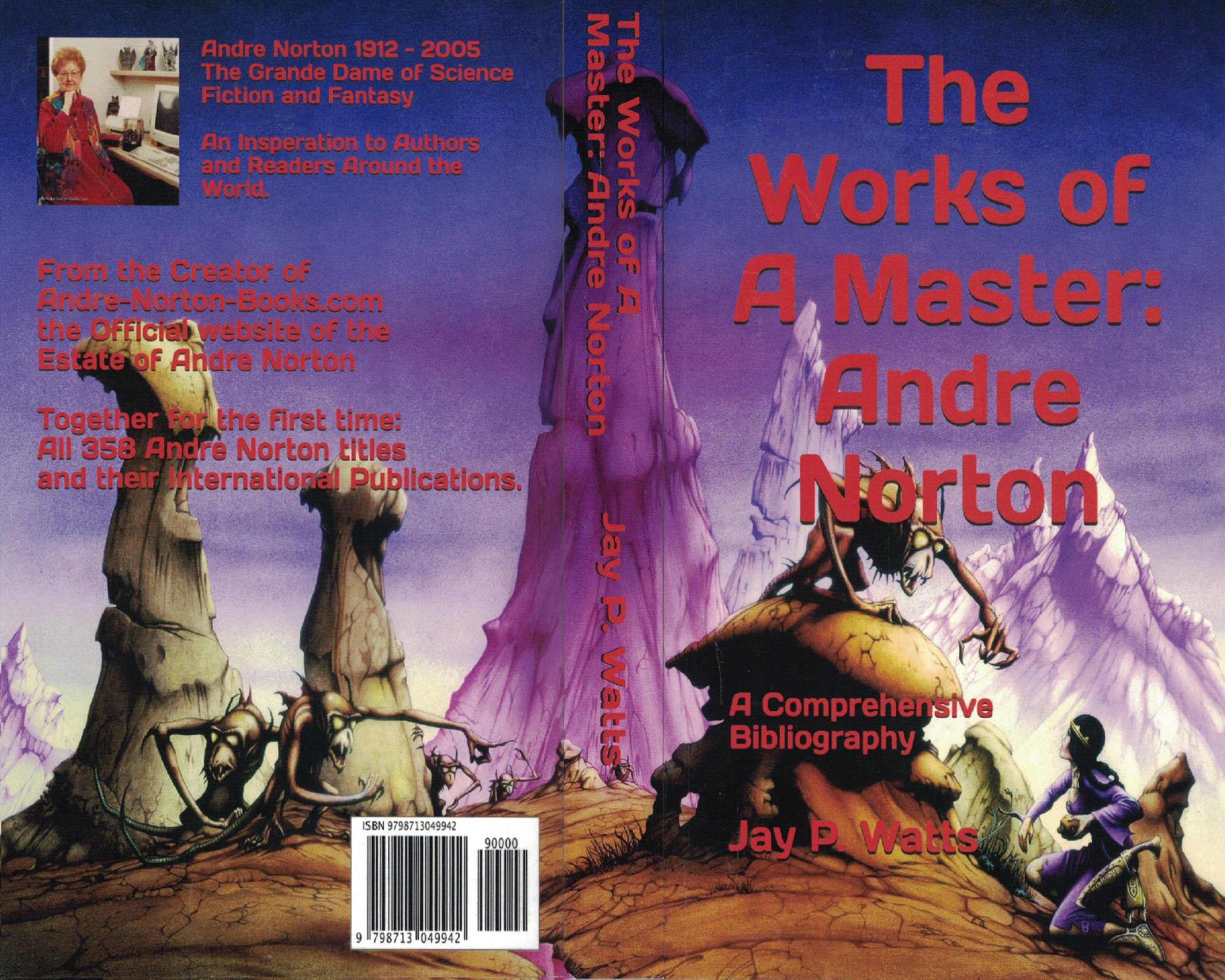Ratha and Andre Norton
by Clare Bell
Alice Mary Norton, better known as Andre Norton, was a prolific science fiction and fantasy writer who inspired many modern Sf and F authors. She also extended a helping hand to many writers, and I was honored to be among the lucky ones. It was she who brought the first book in the Named series, Ratha's Creature, to the attention of its first hardcover publisher, and who encouraged a very uncertain young writer to stick with the daunting task of composing and revising.
(Why the gryphon pictures? Keep reading!)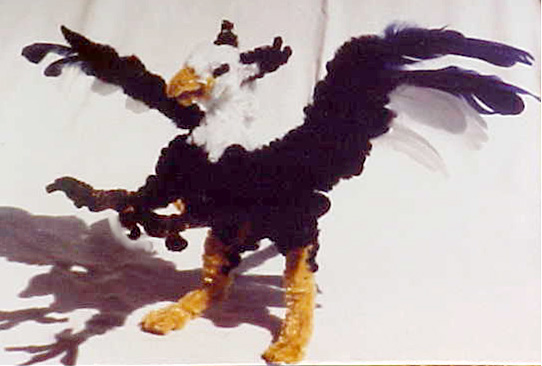
The tale of how it happened is probably about as long and twisty as the trails Ratha has followed through the series, and just as unique. Toy animals I made in childhood began the way to friendship and indispensable help from an exceptionally talented and kind woman whom I will never forget.
The New Zealand author and blogger Joan Druett summarized the story in her 2008 post,
http://joan-druett.blogspot.com/2008/10/inspiring-story-of-sponsorship.h...} [Link No Longer Works] {Imaginator Press', Sheila Ruth also has a PDF of the tale on her website: http://www.imaginatorpress.com/downloads.html} [Link No Longer Works] (This critter in the photo below was made for Andre Norton and is based on a creature in one of her books.)
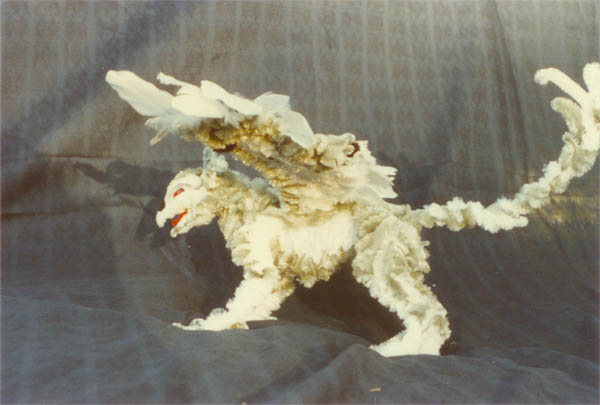
A Miniature World of Creatures
When I was about 7, I learned how to make toy animals out of pipe-cleaners, or, as they are known now in fancier terms, chenille stems. It started with little horses, but became more complex, including various big cats (tigers, lions, black panthers, a cheetah named “Juanita” and others).
All this was done by twisting the wires together in varying ways. I disdained the use of glue, since I needed my little creations to be durable and flexible. I started with a simple armature and built on it, wrapping and twisting. To get color effects, such as spots or stripes, I wove the stems in and out. I also made the back and belly different colors by this interweaving method.
I liked these creatures because they were bendable and completely pose-able, as opposed to most toys, which, at the time were rigid, or, at best had only joints. These critters developed from simple semi-stick figure types to detailed 3-D miniature animals which were about 6 to 8 inches long. I even embedded a cork in one of them so that he would float in the bathtub. He had a horsey head, but his feet were webbed so that he could swim. Perhaps he was the prototype of the seamares I later wrote about in “Ratha and Thistle-chaser”. I was astounded to find much later that such a “sea-horse” had actually existed.
Pipe Cleaner Evolution
The animals got more complex and larger as I experimented with different materials (scrap telephone cable wire), and they began to form a little society. I wove tales about them and they had endless adventures. The center of the society was the horses, some of whom were named after horse characters in Anna Sewell's “Black Beauty”. I had a “Ginger”, a mare made of orange and white telephone cable wire, a “Justice” made of black and brown wire, “The Black” made out of solid black wire. I had made-up names as well. The society's leader was a mare called “The White One”.
This little world didn't have any humans, since they were too hard to make. So, I made up little critters to ride the horses. These guys had horseheads and tails but human-like limbs and hands.
“Juanita the Cheetah” and the other various cats also played a role in this odd little society, often as scouts. They were friends with the horses and helped them in various things. They inhabited various regions around the house. Armchairs became mountains for them, and tables became plateaus. The lawn outside was a jungle for them and bushes were huge trees. When they got stepped on, they got rebuilt, and they went with me on car trips. When not being animated, they lived in a sweet little metal wastebasket, which was aqua blue green with a dark red rose on it. I wish I still had that little wastebasket and its inhabitants.
The next step came when I discovered the type of pipe-cleaners sold for crafts. These were longer, fuzzier and more durable than the ones sold for cleaning pipes or as toys. The first creature I crafted from those was a black horse with far more detail than the previous ones. He was larger and had hooves, fetlocks, a proudly arched neck, a flying tail, a much more realistic head and some hints of musculature. To keep him from getting too heavy, I devised a way of making the body hollow, which also used fewer pipe-cleaners than the previous solid-wrap technique.
More creatures followed, many now emerging from the fantasy and science fiction I was now reading. I discovered the faceted plastic jewels used on belts and figured out how to embed them in pipe-cleaner faces to create faceted eyes. I made another little black horse but gave him bat wings (like the steeds in Andre Norton's Steel Magic) and green sparkling eyes. Inspired by Anne McCaffrey's Pern series, I figured out how to sew fabric to the pipe cleaner stems to make batwings for dragons and fire-lizards. I leaned to work feathers in with the chennille stems without using glue or any other adhesives. The feathers were sewn or tied firmly in place. The wings as well as the rest of the creature were fully flexible.
Convention Companions
Some of my friends, who noticed this, asked me to create creatures for them. I found, to my astonishment, that people would pay me for the critters, as much as $25 or $50, which was a bit of money back in the 1970's. People would wear them as shoulder-pets to science fiction and costume conventions. I did more fire-lizards, a Chinese dragon, more bat-winged horses, more pegusi. I began to take commissions by mail and showed a cage-full of critters at BayCon in San Francisco.
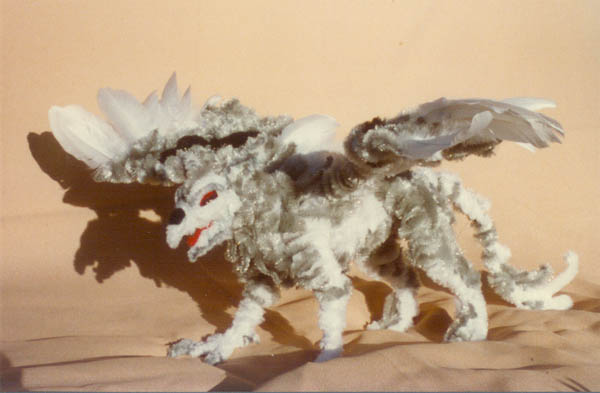
A Crystal Gryphon for Andre Norton
Then came a request from a lady who was a friend and fan of Andre Norton. I had read several of Norton's books and greatly enjoyed them. The woman wanted a black and white gryphon with gold eyes. I made it for her and sent it off. Within a few weeks I got a letter back, saying that she loved the gryphon. Not only that, but she had shown it to Andre Norton and Andre had asked if I could make a gryphon for her. Andre wanted a gryphon just like the one in her book, The Crystal Gryphon, a silver and white creature with blazing red eyes.
I had already read the book and was greatly impressed with it, so I immediately said “yes” and embarked upon construction. It turned out beautifully and I think I still have a picture of it somewhere, since I documented my creations before I sent them off.
When I boxed up the gryphon, I decided to do something daring. I was already writing at the time and had done a lot of Star Trek fan fiction. I had done two complete Star Trek novels, which had been published in an amateur fan magazine called “The Other Side of Paradise”, or, as it was known in ST fandom, TOSOP. TOSOP devoted a complete issue to the first novel, which was called “The Elder Brother”. It was well received in the fan community and even got a fan award.
Before I closed the box with Andre's silver gryphon in it, I slipped in a copy of “The Elder Brother” TOSOP issue. It was a very long shot, but I was so impressed with Andre's work that I hoped she might enjoy mine. I never thought she would do anything except read a bit of it, then put it away on her bookshelf. She probably received thousands of similar items every year.
Was I astounded when I got a very nice letter back from Andre! She thanked me for the “crystal gryphon”, saying that she had read the whole of the “Elder Brother” and liked it. She asked if I had anything original, since the novel was Star Trek fan fiction and not professionally publishable.
(Here's another picture of Andre's gryphon, rearing up)
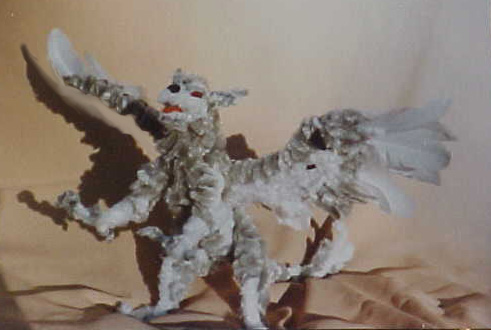 Genesis of the Named
Genesis of the Named
Well, it turns out that I did. Having gotten very interested in prehistoric cats from seeing a painting by Charles R. Knight, I had embarked on a piece entitled “The Gift of the Silver Rock”. It was about big cats who were given human-level intelligence by extra-terrestrials, and what happened afterward. The “Silver Rock” in the title referred to the alien spacecraft which had landed on Earth, and whose inhabitants were fiddling with the genetics and physiology of certain sabretooth-like big cat species. I typed up a copy and sent it.
It was, in retrospective, pretty awful. I'm amazed that I had the guts to send it to her. And I'm also amazed that she found a glimmer of promise in it. Her next letter literally knocked me off my feet.
She wanted to show it to her hardcover publisher, Margaret K. McElderry, of Atheneum/Argo. Would I give her permission? Yes! Absolutely! Certainly! My brain was whirling as I wrote the reply.
In hindsight, I believe that the embryonic novel caught Andre's attention because it contained two themes that she embraced in her own work. One was the idea of intelligent, sapient cats, both large and small, who populate her works such as Breed to Come, Star Man's Son 2250 A.D., and others. The second was her central theme of the misfit or displaced outside rejected from society who must find a redemptive path to self-realization.
Disappointment and Challenge
The letter from McElderry came a few weeks later. She gave me a challenge. She could not publish the manuscript as it existed. However, if I would try revising it, she would look at it again. A second letter arrived from Andre. Don't be discouraged, she told me. This has real promise. Find the real story here and try once more.
So, heartened by Andre's encouragement, I began. I re-read the manuscript, then took it apart and scattered pages all over the carpet in my apartment.
I crawled around the sheets, picking ones with things I liked and putting them in piles. The piles held various snippets of story that begged to be expanded. So, I began writing again with paper and pen, adding and interleaving the handwritten stuff with the typewritten. Some pages got cut up and the pieces put in different piles. Some got thrown away. Some characters grew, others shrunk, disappeared, or were combined to form new ones. Some popped out of nowhere and demanded that I include them.
Meanwhile I haunted the libraries around my home in Palo Alto, researching prehistoric big cat species and their world. More paper and pen sessions, more cut up and pasted pages. Three months of crawling around on the carpet (when I wasn't working as an engineer for IBM in San Jose). Key scenes began to emerge. Ratha, sitting before the fire, speaking to it, calling it her creature. Brandishing the Red Tongue before the clan. Thakur, teaching the cubs. Guarding the three-horn deer and four-toed horses against attacks from the Unnamed.
Ideas came first as notes, then narrative, which grew into chapters and the chapters multiplied over the course of three months. At the end of it was a sloppy heap of handwritten pages, typewrtten pages, cut up and re-pasted typewritten pages with lineouts, inserts, arrows and who knows what else. It was such an unholy mess that I couldn't deal with it anymore. I paid someone to type it and collapsed, thinking that I had failed utterly.
The Typist Cried
It took one or two weeks to type up. When I got the call from the typist saying that it was finished, she added an extra comment. She didn't usually read the stuff she got; she just typed it. This time, however, she couldn't help reading and got caught up in the story. “I cried at the ending”, she told me.“When Bonechewer died.”
So, with puzzlement mixed with dawning hope, I paged through the neatly typed manuscript. Of course, I could not see what was really there. No author can, after working so intensely on a book. You are too close. A strange myopia has set in. You cannot see the story for the words.
So, it was just hope that made me copy the manuscript, then box it up and address it to Margaret K. McElderry, Atheneum, Atheneum Argo/MKM Books. The rest was up to this legendary children's book editor.
All I could do was wait and hope. I had poured everything I had into this,
And, as you know, the miracle happened. McElderry accepted “Ratha's Creature”, saying she was highly impressed not only with the book, but with my capability to revise. Richard Curtis came in to handle the negotiations, and I have been with him ever since.
Fessran's Torch
Editing began with McElderry and members of her staff. One niggly problem was Fessran. She kept losing her torch. On some pages she had it and on other pages it disappeared into some unknown prehistoric dimension. MKM and I had a laugh over this, and then I bent to work and fixed it.
The Crystal Gryphon's Place
Andre sent me a congratulatory letter and I answered with a heartfelt thank-you for giving Ratha a chance. She and I continued corresponding for several years. In the mid 1980's, I visited her at her house in Florida. Her home was a library. Every room, and even the hallways and garage were filled with bookshelves and books. All meticulously organized but getting a little dusty because she was having trouble getting to them all.
She showed me the silver gryphon I had made for her and said it had a special place on her shelf and in her heart.
This site http://www.andre-norton.org/gallery/lady.html [Link No Longer Works] has various pictures of Andre, including ones of her in her Florida home, to which I was graciously invited.
[Webmaster's Note: Most of the pictures referenced can be found in the various galleries found on this site.]
Though Andre published her first novel in 1934, at age 22, she was considered and treated as a “juvenile” writer. She also had to change her name in order to improve her marketability to her audience, which was assumed to be young boys. Not until the early 50's when she was into her forties and her health had already become fragile, did she achieve major status as a science fiction and fantasy writer when Donald A. Waldheim Books published her Star Man's Son 2250 A.D.. It is only now that this novel is credited with inventing the whole post-apocalyptic science fiction genre.
As a recent New York Times article by Christopher Lehmann Haupt states,
“Although Ms. Norton's subsequent books for Ace sold in the hundreds of thousands, she found herself the victim of a Catch-22: critics of science fiction did not take her seriously because she was considered a juvenile writer and critics of children's literature dismissed her because she wrote science fiction.”
It is a shame that Andre didn't receive all the recognition that she should have gotten while she was still healthy and active. She was a brilliant writer and a deeply compassionate woman. Without her encouragement, the Ratha series would have never existed. May her cat-spirit eat of the haunch and sleep in the driest den forever.


